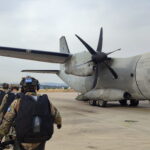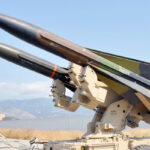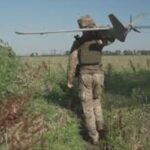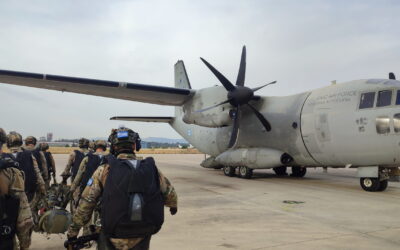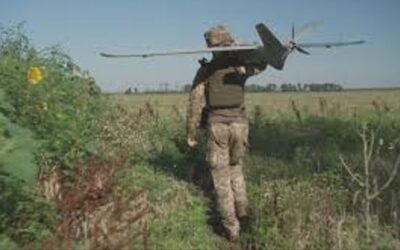It has only been a few months since Croatia started receiving the first of the Rafale fighter jets it ordered from France.
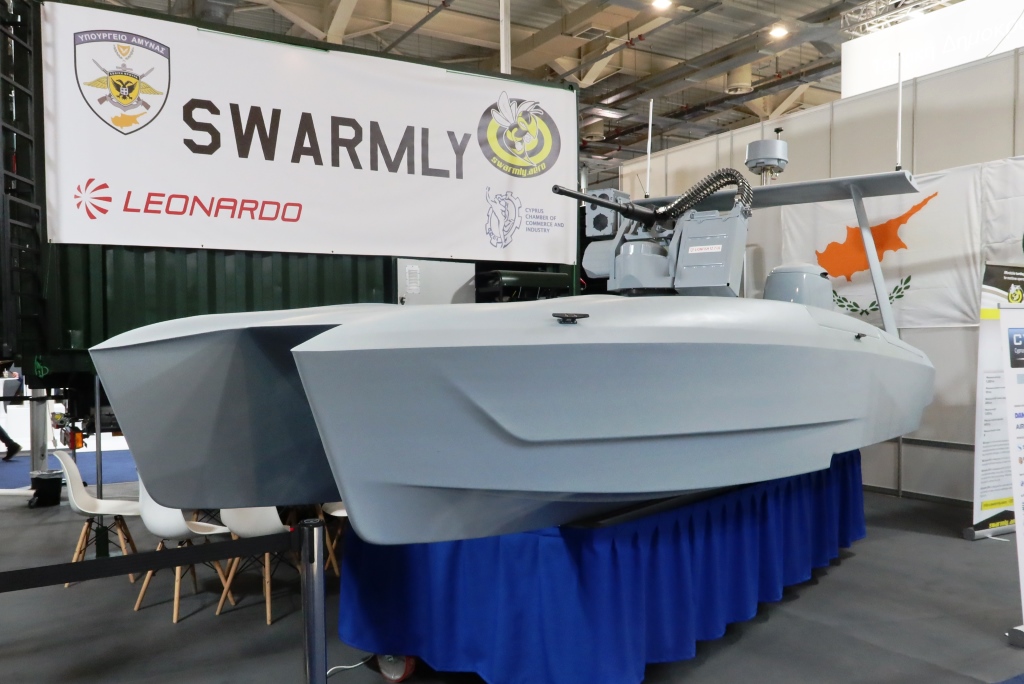
*Athanasios Tsakalos
The belief in Russia’s unchallenged military superiority over Ukraine had been around long enough to create a defeatist feedback loop at least at the beginning of the full-scale invasion.
Specifically, the belief in the futility of military resistance against Russian aggression led to a discrediting of the combat capabilities of the Ukrainian Armed Forces, which in turn further consolidated the perception of “certain defeat”. In other words, a self-sustaining perception had been created that Ukraine would be a bulwark of Russians’ dispositions and consequently, the “realistic” option was to accept Moscow’s claims.
A similar scenario would predefine the outcome of a wargame between corresponding powers as preamble losers and winners respectively. However, an initial reading of developments in the Ukrainian operational theatre strongly suggests that there is serious opposition to that view.
According to many analysts, there is no absolute military power, but only a relative one, which takes shape depending on the geographical, political, and other facts of each confrontation. Consequently, it is not the one who is “strongest” who wins, but the one who is most adapted. Obviously, in this claim, we do not take into account the nuclear arsenal of Russia, or the various threats of using it, as this would create an unprecedented chain of events. Rather, we merely focus on the conventional armed forces of each state.
Hence, Ukraine chose to resist by adopting an asymmetric-type of warfare, as Russia’s military capabilities are significantly greater than Ukraine’s.

Distributed Lethality Concept
On these grounds, the Ukrainian Armed Forces invested in the US concept of “Distributed Lethality”. The “Distributed Lethality” (DL) concept was developed to enhance the viability and offensive capabilities of the US fleet in an Anti-Access and Anti-Denial (A2/AD) environment.
Based on this logic, Ukraine indigenously manufactured an Unmanned Surface Vessel (USV), which carries and integrates electronic as well as explosive payload, to apply the said concept.
Also read: DEFEA 2023 | Participation of Cypriot Swarmly with combat-proven UAVs and armed USV

To date, Unmanned Surface Vehicles (USVs) are increasingly allowing the Ukrainians to attack and harass the Russian Navy in the Black Sea and on the Crimean Peninsula. A country with practically no fleet is outmanned and outgunned off its own coastline, but these USVs are proving to be a vital tool with proven asymmetric strike capabilities.
According to CNN, the developer of one of the USVs, who asked to remain anonymous, said their work on USVs only began once the war started and it was very important, because they did not have very many forces to resist the maritime state Russia. Thus, they needed to develop something indigenous, because they didn’t have the existing capabilities.
Ukraine is now starting to show those capabilities, even if missions have varying degrees of success. The latest versions of the USVs seen by various sources weigh up to 1,000 kg, with an explosive payload of up to 300 kg, a range of 800 km, and a maximum speed of 80 kph. The estimated cost for such a USV is presumed to be around 250,000 USD.
Multiple USVs attacks were carried out on Russian assets in Crimea and the Black Sea, while Ukrainian sources confirmed that USVs were involved in at least two recent attacks: the Kerch Bridge in July and in Crimea’s Sevastopol port last October.
Also read: Ukrainian war | Ukrainian drone strikes on Russian targets – VIDEO
The vital artery of Crimean Bridge, a nearly $4 billion project is a key target to disrupt and sever the resupply route for Russian forces in the illegally annexed peninsula and in occupied areas of the southern front. The latest attack caused severe damage to one of the two directions which was out of service until September.

"The bridge was attacked with the help of surface drones. It was difficult to reach the bridge, but in the end it was possible to do it," stated allegedly an unnamed source in the Security Service of #Ukraine to RBC-Ukraine. pic.twitter.com/AQ597Vv3gj
— NEXTA (@nexta_tv) July 17, 2023
The Russians have yet to adjust to Ukraine’s newest capabilities, they claim. It is very difficult for the Russians to find such a small drone, the developer says, as the speed of these USVs exceeds any seacraft in the Black Sea region at the moment. The engine of the USVs is presumed to be taken out of commercial jet skis and modified to fit in the USV’s hull.
At the same wavelength, Ukraine has also been aiming at Russia’s Black Sea Fleet, which has cruised menacingly off the coast and become a recipient of many missile attacks.
The developer argues their work against Russian naval forces makes some operations impossible and other operations more difficult.
The deployment of the Russian ship Olenegorsky Gornyak sets the example, as a few days back a kamikaze USV speeded into Novorossiysk, a port in southern Russia just 70 miles east of Russian-occupied Crimea, and struck it. The Ropucha-class landing ship barely survived a direct hit from at least one of the Ukrainian USVs.

#Ukraine: Overnight, Ukrainian USVs (Kamikaze Sea Drones) attacked the Russian port of Novorossiysk, hitting the "Olenegorsky Gornyk" Project 775 large landing ship of the Russian navy- causing it to list due to internal flooding.
The full extent of the damage is so far unclear. pic.twitter.com/z5pIQ3O7zO
— 🇺🇦 Ukraine Weapons Tracker (@UAWeapons) August 4, 2023
The drone’s video feed depicts the USV – which operators apparently control via Starlink satellite – closing in on Olenegorsky Gornyak, while under the cover of darkness. By late Friday morning, a tugboat had nudged Olenegorsky Gornyak to a pier in Novorossiysk, essentially leaning the landing ship against the concrete, so it wouldn’t sink.
The Ukrainians also sank or badly damaged several Russian patrol boats and landing crafts and nowadays the USVs together with Neptune Anti-Ship coastal batteries pose a major risk for all the Russian Naval assets in the area.
In fact, Russian warships staging from Crimea are under constant drone assaults. When Russian warships leave port, they do so as fast as possible, usually only long enough to launch a few cruise missiles at Ukrainian cities and sail back to the port.
Also read: Russia | Putin promises free grain to African countries
Additionally, this tactical approach made an impact on the diplomatic field. The Kremlin last month cancelled the 11-month-old Black Sea Grain Initiative, which had allowed commercial vessels to ship grain from Ukrainian ports. The Russians subsequently signalled that they might blockade grain shipments.
That blockade turned out to be a bluff. Grain ships are still sailing from Ukraine’s ports on the Danube River Delta. The attack on Olenegorsky Gornyak is a reminder of why the grain ships can sail with impunity: the Russian fleet is losing the Black Sea naval war. And it’s losing it to a navy with practically no ships of its own.
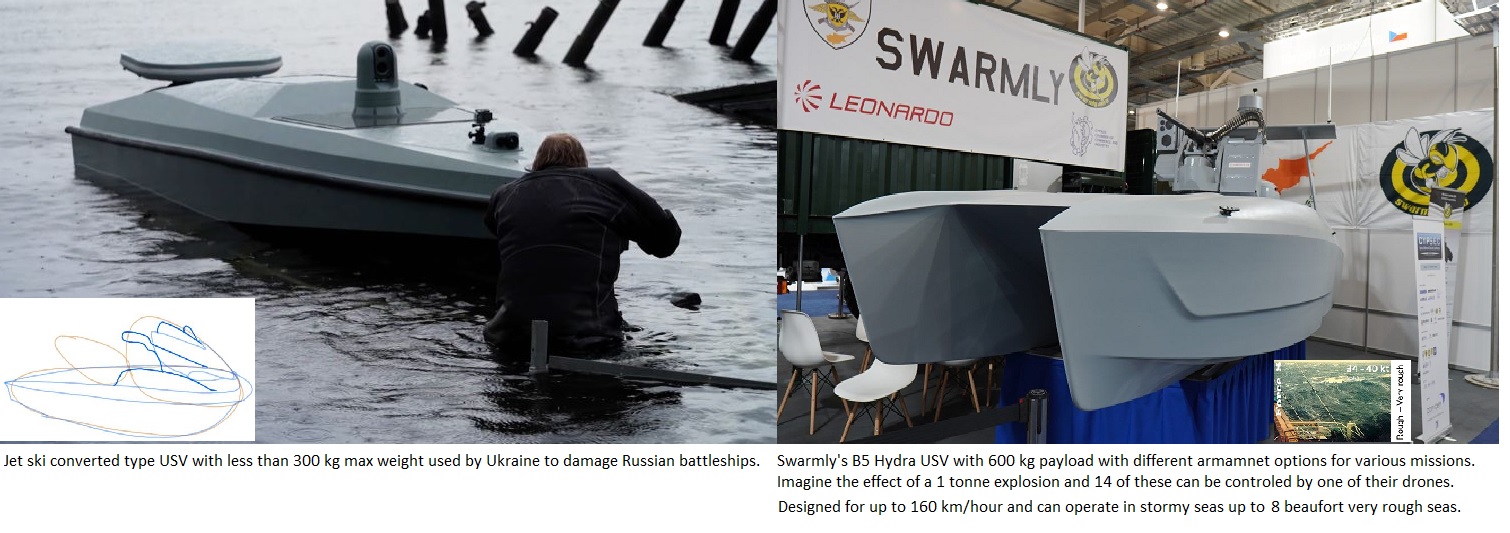
Taking into consideration that other countries such as Cyprus have to deal with the same asymmetry in terms of power, as Ukraine does with Russia, the Armed Forces Staff could follow Ukraine’s example and adopt their own concept of “distributed lethality” by acquiring the made-in-Cyprus USV B5 Hydra.
The B5 Hydra is a project that was carried out in collaboration with the Italian Leonardo within only 3.5 months.
This USV, with a payload capacity of 600 kg, allows the installation of a LIONFISH 12.7 Ultralight mount without deck penetration (catamaran type). The vessel is armed with a Browning 12.7 mm M2HB heavy machine gun, weighing less than 180 kg without ammunition.
Alternatively, the B5 Hydra can also be used in “kamikaze” mode with its two hulls filled with explosives, while Swarmly and Leonardo seek to expand its armament configuration with the Black Scorpion lightweight torpedo. In addition to these, Swarmly Aero’s Poseidon UAV can act as an intermediate connection and communication hub by relaying to 14 B5 Hydras, a novelty among its peers.
Subsequently, the first tier of a renewed military power could be the acquisition of USVs like the B5 Hydra, which would unleash surprising and deadly strikes against targets, both static and moving, leaving a small margin of reaction time to hostile forces. The effects of these strikes can be both destructive and disruptive, aiming not only at the immediate extermination of the opponents, but at the elimination of the cohesion of their units. Mass production of the B5 Hydra could be a cost-effective solution to the issue as a “Kamikaze” vessel, since a modern “fireships” would deliver significant strikes to high-value targets.
The idea of unmanned surface vessels is not new, however, their use could be thoroughly studied by Military Staff as a cost-effective solution.
Also read: B5 Hydra | Cyprus-based Swarmly Aero’s unmanned surface vessel
At this point, we note that Turkey has been investing in the field of Unmanned Surface Vessels for years, with the armed Unmanned Surface Vessel ULAQ already in the evaluation phase. From the point of view of the Greek Defense Industry, we note the effort of Barracuda and IDE with the Sea Rider and i-sostis, and about which you can find more in the following article.
Also read: The use of USVs in Crimea & the Greek-made i-sostis and Sea Rider | Photos & VIDEOS
**The views and/or comments expressed in the articles belong to each author and may not constitute an opinion and/or position and/or be adopted as is by the company and/or the site administrators. More in the terms of use of the website.
READ MORE
The role of SERIOUS GAMES in the development of skills on Defense Standards
In an increasingly complex world, one vital factor for any successful organization is continuous capability building.
Strategy for Building Up Interoperable Defence Capabilities
Based on the current and emerging security threats and challenges in the geostrategic landscape, there is a…
HNDGS | Bilateral joint training between Greece and Poland – Photos
The bilateral joint training between the Armed Forces of Greece and Poland, in the wider area of Attica, was completed on Thursday…
Sielman | Contract for support of the HAWK anti-aircraft system
The US Department of Defence has awarded a $49.9 million contract modification to Greek company Sielman S.A. to provide diagnostic and…
Hellenic Entrepreneurs Association | Ideas & Positions for the Promotion of Greek Entrepreneurship
The members of the Hellenic Entrepreneurs Association (E.E.N.E.) participated in a roundtable discussion entitled “Ideas, Positions…
Ukraine | Increase in defence spending by 367 million euros for the acquisition of drones
Kiev is increasing spending by 15.5 billion hryvnias (367 million euros) to bolster Ukraine’s armed forces with drones, according to…
HMoND | The legislative initiative for HCDI is under consultation
The legislative initiative of the Ministry of National Defence, under the title: “Establishment of the Hellenic Center for Defence…
Russia | Cluster bombs hit residential area in Odessa
Images from Russia’s strike in the heart of Odessa, which hit the so-called “Harry Potter Castle”, a former politician’s mansion now…








